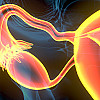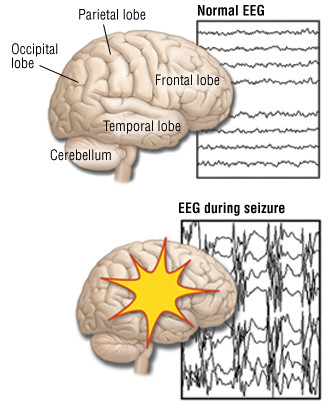Recent Blog Articles

Lead poisoning: What parents should know and do

How does waiting on prostate cancer treatment affect survival?

Does running cause arthritis?

Is alcohol and weight loss surgery a risky combination?

Preventing ovarian cancer: Should women consider removing fallopian tubes?

Healthier planet, healthier people

Is snuff really safer than smoking?

Will miscarriage care remain available?

Considering collagen drinks and supplements?

Does less TV time lower your risk for dementia?
Partial Seizures (Focal Seizures)
What Is It?
Nerve cells in the brain pass signals among themselves using both electrical current and chemicals. In a seizure, the brain's electricity is not passed in an organized way from one cell to the next, but spreads over a cluster of cells or the whole brain all at once. When only a portion of the brain is involved, the seizures are called partial seizures or focal seizures. These seizures vary tremendously in their effects on the person's movement, sensation or behavior depending on which area of brain is involved.

Sometimes a seizure may begin as a partial seizure but change part way through the event to involve the whole brain in the seizure activity, ending with arm and leg movements on both sides and loss of consciousness. When this happens, it is called a generalized seizure. A person who has seizures repeatedly is said to have epilepsy. In 70% of cases, the cause of epilepsy cannot be found. Sometimes, epilepsy can be caused by scar tissue or a brain infection that can interfere with the brain's electrical signaling. Scar tissue in the brain can be caused by head injury, tumor, stroke or surgery.Some partial seizures are associated with a change in consciousness, even though the person might appear to be awake and his or her eyes may be open. In this type of seizure, called a complex partial seizure, the affected person is unaware of the people nearby during the event, is not aware of his or her own movements or behaviors during the seizure, and does not remember the seizure after it occurs. When the person having a partial seizure is aware of having a seizure, is aware of his or her surroundings and remembers the event afterward, the seizure is classified as a simple partial seizure.
To continue reading this article, you must log in.
Subscribe to Harvard Health Online for immediate access to health news and information from Harvard Medical School.
- Research health conditions
- Check your symptoms
- Prepare for a doctor's visit or test
- Find the best treatments and procedures for you
- Explore options for better nutrition and exercise
I'd like to receive access to Harvard Health Online for only $4.99 a month.
Sign Me UpAlready a member? Login ».
Disclaimer:
As a service to our readers, Harvard Health Publishing provides access to our library of archived content. Please note the date of last review or update on all articles.
No content on this site, regardless of date, should ever be used as a substitute for direct medical advice from your doctor or other qualified clinician.
Free Healthbeat Signup
Get the latest in health news delivered to your inbox!
